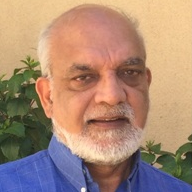Remote Sensing of the Urban Climate
A special issue of Remote Sensing (ISSN 2072-4292). This special issue belongs to the section "Urban Remote Sensing".
Deadline for manuscript submissions: closed (30 June 2021) | Viewed by 21583
Special Issue Editor
Interests: remote sensing; natural hazards; urban environment; atmospheric pollution
Special Issues, Collections and Topics in MDPI journals
Special Issue Information
Dear Colleagues,
Due to economic growth throughout the globe, populations living in rural areas have migrated to urban areas. The population in urban areas have increased and some of the cities in the world have become mega cities (more than 10 million people). In the last three decades, urbanization has increased throughout the globe, enhancing the demand for vehicles, energy, industry, etc. The population explosion has impacted land use and land cover affecting natural resources, hydrological cycle, environment, atmospheric pollution, air quality, etc. The land cover, forests, ponds, grasslands, agricultural lands have been replaced by buildings, roads, gardens, parks, sport fields, etc. Such changes affected the recharge of ground water and enhanced the frequency of flash floods that severely affected the ecological conditions. Urbanization is the real cause of poor air quality, which has adversely affected human health and visibility and also enhanced urban heat islands. Such changes have played an important role in climate change at the local, regional and global scale. The Special Issue on “Remote Sensing of the Urban Climate” invites papers dealing with satellite observations, data analysis and modelling associated with urban pollution, environment, ecology, dynamics of pollutants, hydrological cycle, extreme events on the changing urban climate. The Special Issue will also consider papers related to human health and mortality associated with the urban climate and pollution.
Prof. Ramesh P. Singh
Guest Editor
Manuscript Submission Information
Manuscripts should be submitted online at www.mdpi.com by registering and logging in to this website. Once you are registered, click here to go to the submission form. Manuscripts can be submitted until the deadline. All submissions that pass pre-check are peer-reviewed. Accepted papers will be published continuously in the journal (as soon as accepted) and will be listed together on the special issue website. Research articles, review articles as well as short communications are invited. For planned papers, a title and short abstract (about 100 words) can be sent to the Editorial Office for announcement on this website.
Submitted manuscripts should not have been published previously, nor be under consideration for publication elsewhere (except conference proceedings papers). All manuscripts are thoroughly refereed through a single-blind peer-review process. A guide for authors and other relevant information for submission of manuscripts is available on the Instructions for Authors page. Remote Sensing is an international peer-reviewed open access semimonthly journal published by MDPI.
Please visit the Instructions for Authors page before submitting a manuscript. The Article Processing Charge (APC) for publication in this open access journal is 2700 CHF (Swiss Francs). Submitted papers should be well formatted and use good English. Authors may use MDPI's English editing service prior to publication or during author revisions.
Keywords
- urbanization
- remote sensing
- ground data
- modelling
- air quality
- urban planning
- dynamics of pollutants
- associated natural hazards
- extreme events
- urban climate





